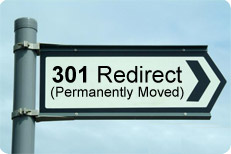At last! We have added the 301 Redirect as a forwarding type for parked domain names!
 The much requested (and needed) feature is now live for all parked domain names. The 301 redirect is the SEO friendly redirect which is recommended by all major search engines as well as openly by Google.
The much requested (and needed) feature is now live for all parked domain names. The 301 redirect is the SEO friendly redirect which is recommended by all major search engines as well as openly by Google.
So, you ask, why is the 301 redirect different from the 302 redirect? A valid question indeed!
The 302 redirect is what you would use when redirecting a domain name to a another location temporarily, it means that any ‘link juice’ value contained in a domain name (or page) is reserved and it is NOT passed on to the target location. So when the temporary period is over your domain is back to where it started with it’s original link value restored.
The 301 redirect is the “permanently” moved redirect, this tells the search engines that this is a permanent change and any link value associated with the domain name should be passed on to the target location.
In short, if you have a domain name which stores your primary web site, you should ensure that any secondary domain names that you have registered use a 301 redirect to the primary site. This ensures that all visitors to your secondary domains are forwarded to your primary site as well as any link value for each domain is also added to your primary domain thus adding to you SEO rank position.
We offer three different styles of web forwarding and redirection with every domain name:

 It is quite amazing how often this question comes up.. So, to address a very very common question here is the simple answer…
It is quite amazing how often this question comes up.. So, to address a very very common question here is the simple answer…